Posts in Category: paper
paper := journal article or paper in peer-reviewed conference proceedings
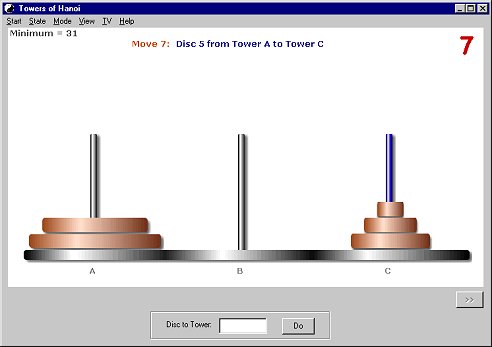
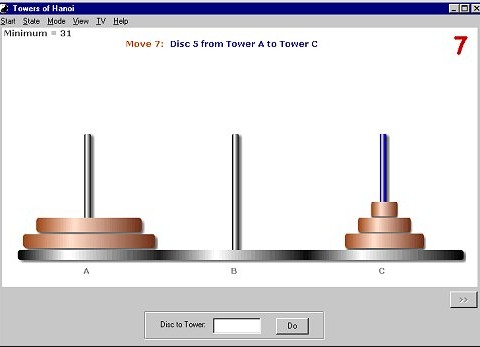
Paper: Thinking by doing?
| There is a co-ordination of senses and thought, and also a reciprocal influence between brain activity and material creative activity. In this reaction the hands are peculiarly important. It is a moot point whether the human hand created the human brain, or the brain created the hand. Certainly the connection is intimate and reciprocal. |
| A.N. Whitehead, Technical Education and its Relation to Science and Literature, p. 78. |
Hansjörg Neth, Stephen J. Payne
Thinking by doing? Epistemic actions in the tower of Hanoi
Abstract: This article explores the concept of epistemic actions in the Tower of Hanoi (ToH) problem. Epistemic actions (Kirsh & Maglio, 1994) are actions that do not traverse the problem space toward the goal but facilitate subsequent problem solving by changing the actor’s cognitive state. We report an experiment in which people repeatedly solve ToH tasks. An instructional manipulation asked participants to minimize moves either trial by trial or only on the last three of six trials. This manipulation did not have the predicted effect on the trial-by-trial move counts. A second, device manipulation provided some participants with an “exploratory mode” in which move sequences could be tried then undone without affecting the criterion move count. Participants effectively used this mode to reduce moves on each trial, but there was no clear evidence that they used it to learn about the problem across trials. We conclude that there is strong evidence for one sub-type of epistemic action (acting-to-plan) but no evidence for a second sub-type (acting-to-learn).
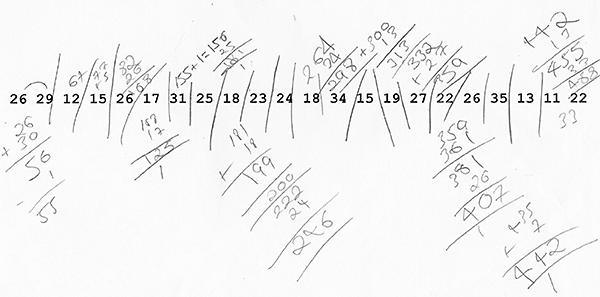
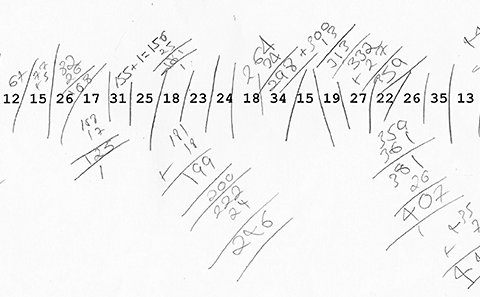
Paper: Addition as interactive problem solving
| These dual skills of manipulating the environment and processing the environment (…) allow us to reduce very complex problems to a series of very simple ones. (…) This is real symbol processing and, we are beginning to think, the primary symbol processing that we are able to do. Indeed, on this view, the external environment becomes a key extension to our mind. |
| McClelland, Rumelhart and the PDP Research Group (1986): Vol. 2, p. 46 |
Hansjörg Neth, Stephen J. Payne
Addition as interactive problem solving
Abstract: Successful problem solving depends on a dynamic interplay of resources between agent, task, and task environment. To illuminate these interactions we studied how participants added a series of single-digit numbers presented on a computer screen. We distinguished between four different user interfaces, each implementing a different mode of interaction with the displayed addends: look only, point, mark, and move. By collecting and analysing complete interaction protocols we were able to integrate overall performance measures with fine-grained behavioural process data on the strategies engendered by the different user interfaces. We discovered reliable differences in the chosen sequences of addends, which can be understood in terms of the cost-benefit structures provided by the interactive resources of the user interfaces.
Keywords: Embodied cognition, mental arithmetic, epistemic actions, complementary strategies, immediate interactive behavior (IIB).
Reference: Neth, H., & Payne, S. J. (2001). Addition as interactive problem solving. In J. D. Moore & K. Stenning (Eds.), Proceedings of the 23rd Annual Meeting of the Cognitive Science Society (pp. 698–703). Mahwah, NJ: Lawrence Erlbaum.
Related: Decade effects in mental addition | Thinking by doing? | Immediate interactive behavior (IIB) | Arabic vs. Roman arithmetic | Taxonomy of actions | The cognitive basis of arithmetic | Interactive coin addition | The functional task environment
Resources: Download PDF | Google Scholar
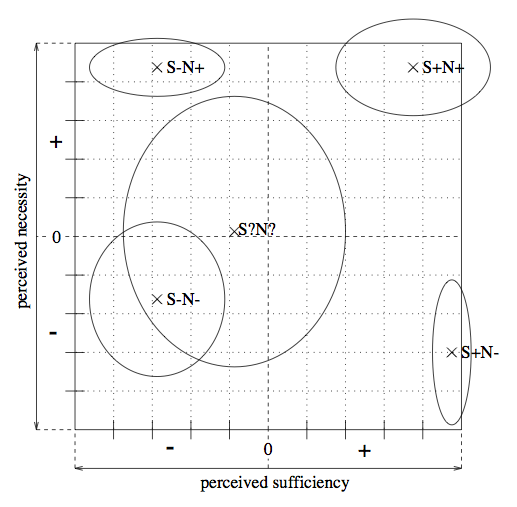
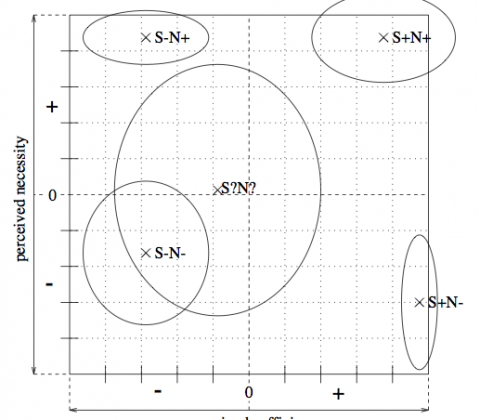
Paper: Suppression effects
| A conditional (…) is not a creature of constant hue, but chameleon-like, takes on the colour of its surroundings: its meaning is determined to some extent by the very propositions it connects. |
| P.C. Wason and P.N. Johnson-Laird (1972), Psychology of reasoning: Structure and content, p. 92 |
| Conditionals are acceptable in virtue of a number of different patterns of dependence (…) If we have no pattern of dependence in mind, a primary object of our investigation should then be to get one in mind. |
| D.H. Sanford (1989): If P, then Q: Conditionals and the foundations of reasoning, p. 196ff |
Hansjörg Neth, Sieghard Beller
How knowledge interferes with reasoning: Suppression effects by content and context
Abstract: The suppression of logically valid inferences by the content or context of premises can be seen as an instance of knowledge having a detrimental influence on reasoning. Although Henle (1962) has claimed that invalid deductions are due to additional premises drawn from background knowledge, current research on content effects ignores the methodological implications of this claim. Elaborating on the suppression effect in conditional reasoning (Byrne, 1989), we present a knowledge-based approach that makes relevant features of background knowledge an integral part of the analysis. After identifying the sufficiency and necessity of conditions as the type of knowledge mediating the effect, we construct and validate task materials independently from any assessment of reasoning (Experiment 1). We then replicate and extend suppression effects in syllogism tasks (Experiment 2) and show that participants are able to couch their background knowledge in formally correct wordings (Experiment 3).
Keywords: Logic, thinking and reasoning, conditional syllogisms, effects of knowledge, content, context.
Reference: Neth, H., & Beller, S. (1999). How knowledge interferes with reasoning: Suppression effects by content and context. In M. Hahn, & S. C. Stoness (Eds.), Proceedings of the 21st Annual Meeting of the Cognitive Science Society (pp. 468–473). Mahwah, NJ: Lawrence Erlbaum.
Related: Searching for counterexamples | Diploma thesis
Resources: Download PDF | Google Scholar